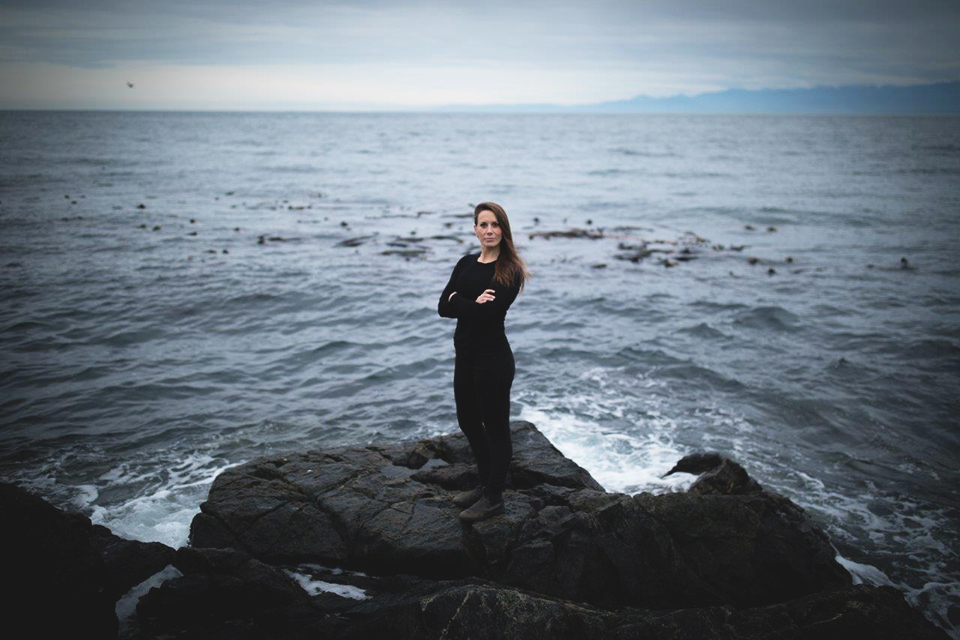Expert Q&A on reporting about climate crisis

Traversing a mountain pass in knee-deep snow is part of a day’s work for environmental journalist and University of Victoria PhD candidate Carol Linnitt. With the 2019 UN climate action summit now underway in New York City, she reflects on Canadian media’s commitment to covering environmental issues.
Linnitt’s stories have taken her from the heights of the southeastern Kootenay region to the depths of the Salish Sea. Linnitt, a graduate student in the Department of English and UVic’s Interdisciplinary Program in Cultural, Social and Political Thought, is the co-founder of the trailblazing investigative news site The Narwhal, which has won numerous accolades since its inception in 2018.
Q. How well is Canadian journalism serving the public when it comes to the climate crisis?
A. Over the coming week, hundreds of thousands of people are taking to the streets to participate in climate marches and strikes. State leaders from across the globe are gathering in New York City to discuss the crisis of our shared environment and how to meet international climate targets.
And yet, you’d be hard pressed to find a single dedicated environment reporter at most media outlets across Canada.
I’d love to see more media outlets spelling out these connections for their readers to flesh out what is really at stake in the causes and consequences of climate change.
"I’ve been a journalist reporting on energy and the environment for just over 10 years. In some ways it’s felt like a decade of eavesdropping on public sentiment about the growing environmental crisis."
–Carol Linnitt, UVic PhD student and co-founder of The Narwhal
Q. In your PhD research, you examine end-of-the-world narratives throughout the history of literature while considering why we are obsessed with the question of humanity’s demise. How does your research intersect with your journalistic work?
A. What’s so fascinating with a lot of post-apocalyptic literature is that, while these texts are supposedly about the end of the world, they’re really about what happens after the end of the world. Who survives and how?
A lot of speculative literature about the end of the world isn’t using the disaster frame to tell a simple story of collapse. Instead, you find tales of resilience, survival and overcoming.
To me, end-of-world narratives are also narratives about worlds to come. They hold a key to moving beyond what right now feels like our impossible present to those possible futures to come. There’s a strange interplay of ends and beginnings that feels incredibly relevant at this charged moment.
Q. What’s your take on the effectiveness of the climate pledge, an initiative launched by Columbia Journalism Review and the Nation in partnership with The Guardian ahead of the UN climate summit?
A. It is incredible to see this kind of collaboration occurring between outlets that have traditionally viewed one another as competitors. This kind of collaborative approach is going to become more and more relevant as journalists report on climate change and its global yet vastly unequal impacts. I’m particularly excited about the prospect of larger, legacy outlets finding smaller, independent newsrooms with which to collaborate on local climate stories.
The Narwhal is also really excited about a more recent push to “complicate the narrative” in reporting on difficult, polarizing topics like climate change or a clean energy transition. A focus on more complex narratives allows us to humanize some of the individuals who are often vilified or stereotyped in high-level climate conversations.
This is going to be more important than ever as we begin to experience a world increasingly impacted by ecological instability.
"I’m personally very excited about the research and effort that is going into thoughtful, responsible journalism that seeks to bridge divides rather than create them."
–Linnitt
Q. As the co-founder of The Narwhal, what does it mean to be a player in independent, non-profit journalism at this time?
A. There are no intermediaries between The Narwhal’s team and our readers. That means our coverage is deeply enriched by our direct relationship with the public.
The Narwhal is an independent, non-profit and ad-free publication, which means we have no investors, shareholders or advertisers to answer to. That frees us to do gritty and sometimes uncomfortable investigative work without fear of censure.
Reader donations are our fastest growing source of revenue at The Narwhal. That’s an extraordinary opportunity and privilege in a time when many newsrooms are forced to chase scandal, sponsorship or clickbait to keep their reporters paid.
Just this past week our readers pitched in $7,000 so we could send a reporter to visit a remote abandoned mine in northwestern BC that’s been polluting a salmon-bearing river for 60 years.
It’s incredible to witness that direct line of connection between a piece of journalism and the readers who value it enough to actually bring it to life.
Photos
Media contacts
Carol Linnitt (Dept. of English, PhD student) at carollinnitt@gmail.com
Stephanie Harrington (University Communications + Marketing ) at 250-721-6248 or smharrin@uvic.ca
Tara Sharpe (University Communications + Marketing) at 250-721-6248 or tksharpe@uvic.ca

